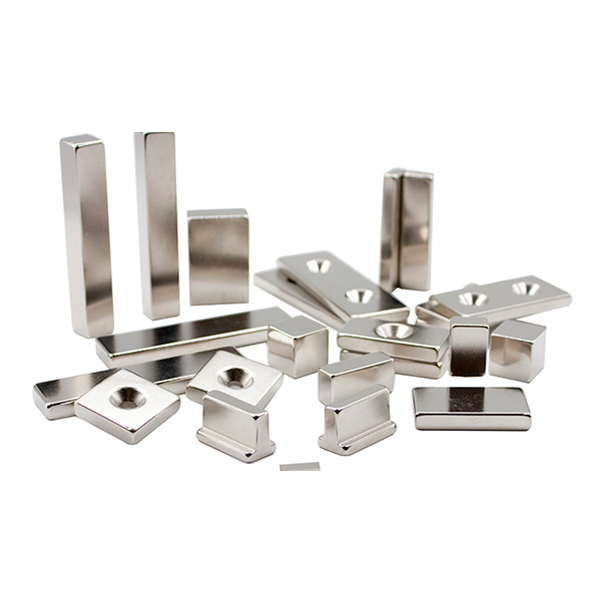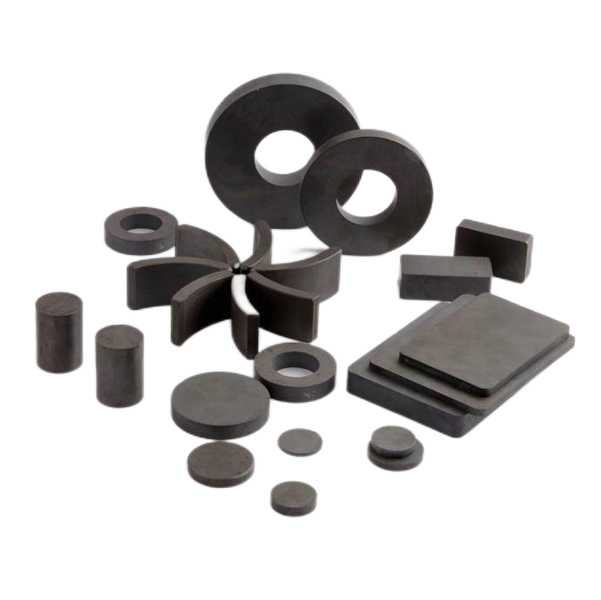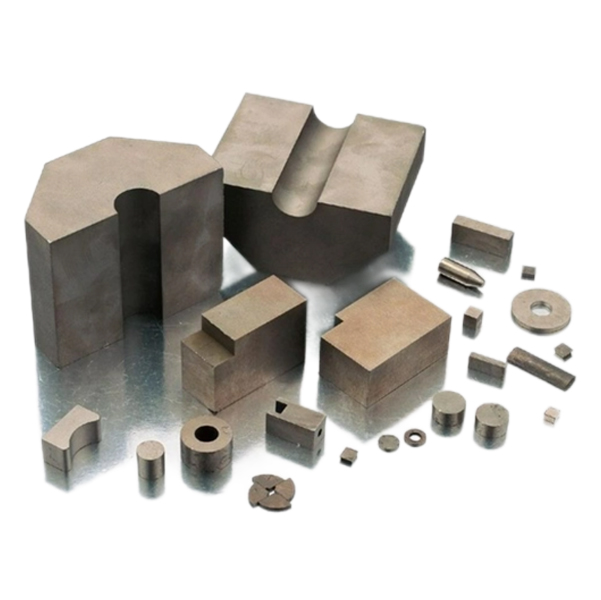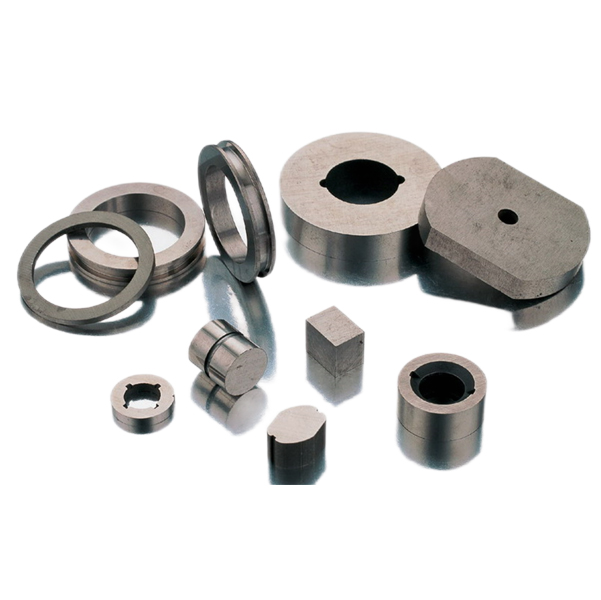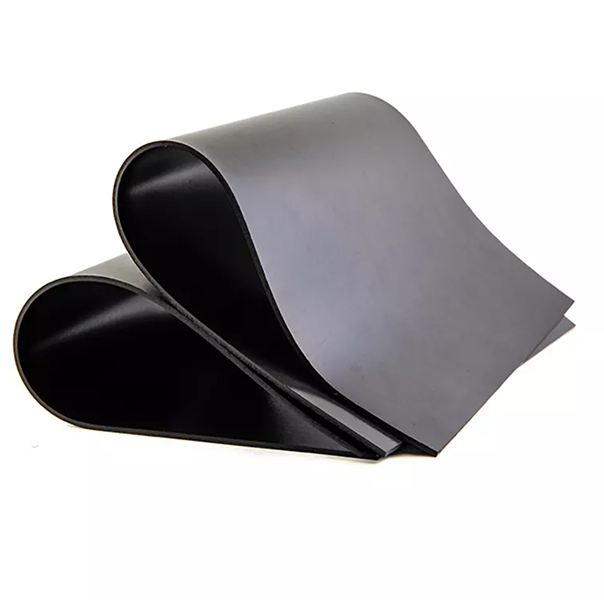What is a Permanent Magnet? What categories exist?
Two important parameters—remanence and coercitivity—define a permanent magnet, which is a material that can produce magnetic flux when magnetized by an external magnetic field.
Typically, a permanent magnet's intrinsic coercitivity (Hcj) is more than 300kOe (in the CGS unit) or 24kA/m (in the SI unit). A permanent magnet's ability to resist demagnetization, such as thermal demagnetization of the operating temperature in various motors and/or electrical machine applications, as well as electric or magnetic circuit field demagnetization, increases with coercitivity.
Compared to an electromagnet, which only acts like a magnet when an electric current passes through it, a commercial permanent magnet requires relatively high remanence and compulsion at a reasonable cost.
What Components make up a permanent Magnet? What types are there?
Permanent magnets are made from hard ferromagnetic materials, which are those that, once magnetized, retain their magnetic characteristics until they are demagnetized, a phenomenon that happens when a magnetic field that is the opposite of the initial field is applied.
A permanent magnet is made of the following materials:
-- The well-known NdFeB, NIB, and Neo are made from neodymium, iron, and boron alloy.
-- When considerable amounts of iron(III) oxide (Fe2O3, rust) are combined with tiny amounts of one or more other metallic elements, such as strontium, barium, manganese, nickel, and zinc, they are mixed and fired to create ferrite, a kind of ceramic material.
-- Cobalt-Samarium. It comprises the samarium and cobalt alloy, as its name indicates.
-- Alnico refers to a group of iron alloys that, in addition to iron, also contain significant amounts of the metals aluminum (Al), nickel (Ni), and cobalt (Co).
-- Flexible magnets are composite materials with magnetic components arranged in an elastomer matrix.
A neodymium magnet is the most powerful magnet in the world, yet there are distinctions between it and a samarium magnet.
They include sintered, fused, bonded (compressed, injected, extruded, and calendered), and hot-pressed magnets in terms of production procedures.
The most magnetic natural mineral, magnetite (Fe 3 O 4), is one of the materials used to make permanent magnets. Though its magnetic field is relatively moderate in comparison to its size, the Earth itself is a substantial permanent magnet. Since the development of the compass in ancient China, people have exploited the Earth's magnetic field for navigation.
Although their applications are constrained by the fact that even the strongest permanent magnets are not as strong as the strongest electromagnets, permanent magnets nonetheless have a wide range of uses, such as neodymium magnet usage in electric motors. However, magnets are ubiquitous and may be found in a variety of places, including:
-- Hard drive.
-- Both credit cards and ATMs.
-- Microphones and speakers.
An electromagnet and a permanent magnet combine to drive electric motors.
What is the mechanism of a permanent magnet?
Like any other magnet, each permanent magnet produces a magnetic field that loops in a unique pattern around the magnet. The strength and size of the magnet have an impact on how large the magnetic field is. The iron filings scattered around a bar magnet, which are immediately orientated along the field lines, are the simplest way to see a magnetic field produced by a permanent magnet.
The two poles of each permanent magnet are known as north and south, however, they might also be referred to as A and B. While opposing poles attract one another like poles repel one another. A magnet's repulsive poles must be kept together with a lot of work, while its attractive poles must be removed with effort. The strongest magnets attract with such a force that they may nick the skin along their path.
Permanent magnets were the only magnets available to humanity for thousands of years. Only in 1823 was the electromagnet first developed. Magnets were usually novelty items before that. Any ferromagnetic substance, such as an iron clip, may conduct a current using an electromagnet. However, the impact rapidly wears off.
Whether it's Neodymium Iron Boron Magnets, Ferrite Magnets, AlNiCo Magnets, Samarium Cobalt Magnets, Flexible Magnets, Magnetic Assemblies, or Magnetic Equipment & Appliance, we'd be happy to help you decide which option is ideal for your application. Call us at 86-135-6789-1907 or send an email to sales@honsenmagnetics.com.
Neodymium / NdFeB Magnets
Super strong rare earth magnet materials
Ferrite / Ceramic Magnets
Powerful, Low cost &
Wide range of applications
SmCo / Samarium Cobalt Magnets
Good thermal stability, High magnetic properties
AlNiCo Magnets
Electrically conductive. Strong magnetic field
Flexible Magnet
Magnetized with multiple
poles on one surface





